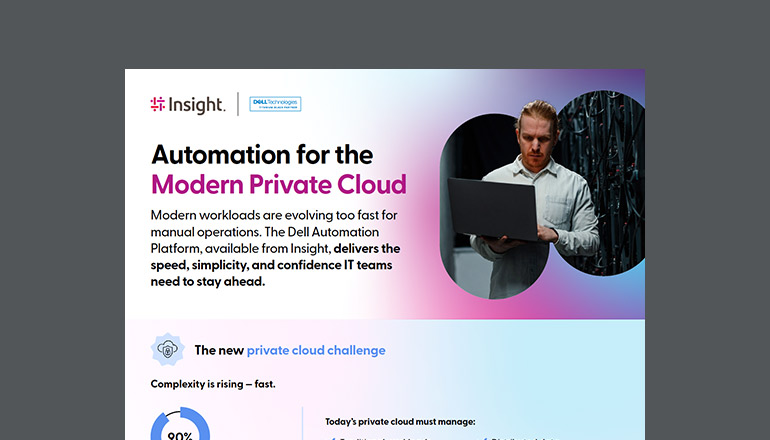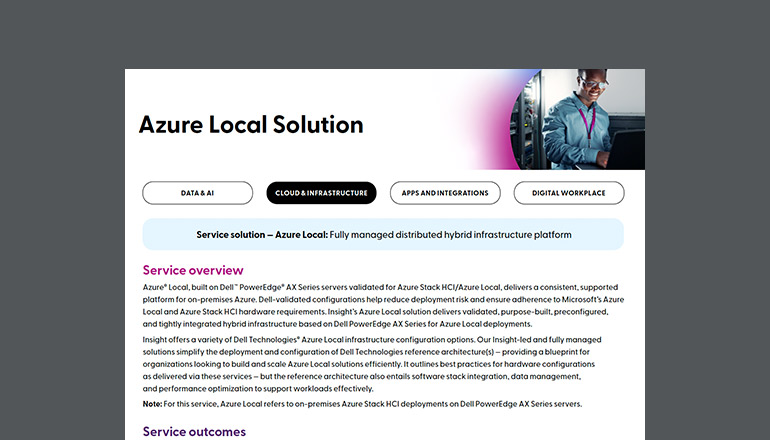Article Top 10 Benefits to Partnering and Outsourcing Training and Development
As you begin reviewing your organization’s goals and budgets for the next quarter, you'll most likely be evaluating your learning and development (L&D) programs, including the benefits of outsourcing training.
By Michele Snead / 18 Jan 2018

Training is as critical as ever to the success of an organization — especially when it comes to staying competitive in a fierce market. When your employees’ workdays revolve around processes, operational tasks, emails, meetings and reports — there's little time for more high-value work, strategic planning and creativity. The root cause of this imbalance is complexity.
Because of increasing complexity, more organizations have begun seeking out strategic partnerships that allow them to outsource learning and development. By joining forces to plan, manage, execute and report on L&D activities while working seamlessly with existing teams — learning and development outsourcing allows organizations to swiftly reach their goals and empower their workforce.
Effective partnerships can also enable your organization to truly focus on strategic initiatives critical to meeting your objectives — which is where internal knowledge and capabilities will have the most impact.
Here are the top 10 benefits of outsourcing training with external partners:
1. Leverage available technology.
It's more cost-effective to license an Learning Management Systems (LMS) than to design and build it with an internal team. Outsourcing learning and development allows you to take advantage of the work of others. An experienced L&D partner can provide turnkey solutions that include access to an LMS, best-in-class content development tools, industry-leading virtual classrooms and more.
2. Align L&D to the business.
For most companies, training is a necessity. But the development, management and delivery of training may be a distraction or worse — it may be completely misaligned to critical business priorities. Your people may be learning skills that are not immediately useful in their current roles or to the goals of the business. In addition, businesses often demand training delivery that isn’t mission critical, with internal training teams “taking orders” instead of strategically partnering on the right solution with the appropriate timing.
Outsourcing training to an experienced L&D company provides your organization with the strategic guidance to eliminate unnecessary or redundant training and focus on those priorities that have a positive impact for your business. Aligning with a flexible partner ensures your training programs target current gaps. Most L&D partners will offer content development, training delivery, training logistics and coordination to fill these gaps.
3. Generate revenue.
Can businesses use learning and development to create new sources of revenue? Yes! Companies that own valuable intellectual property with their solutions can outsource training to experienced L&D partners and sell access to a mass audience to generate revenue.
4. Mitigate risk.
Training helps prevent failures and protects your organization from liabilities. If your business fails to provide the training your employees or customers need, when they need it, you create vulnerablity. Outsourcing learning and development to a company that specializes in training can help prevent unnecessary risk and failure costs.
5. Improve scalability of resources
Running an internal training organization requires a wide variety of skills and talent. Full-time internal staff is a fixed resource, but training delivery is a variable activity. One of the main benefits of outsourcing learning and development is the ability to flex the number of resources to deliver the training you need — when you need them. This allows your company to scale up and down based on current demands.
6. Gain an outsider’s perspective.
All organizations are in danger of falling into the same bad habits when it comes to L&D. Work routines become so ingrained that it becomes difficult to change when new systems or initiatives are introduced. Outsourcing training to an outside team, especially one that has a great amount of experience in organizational change management and technology adoption strategies, is a way to overcome resistance to change in training programs and to ensure the behavior changes that are necessary to long-term success.
7. Accelerate time to market.
Bringing a new product to market may be dependent on getting resellers trained on how to sell or service your product. Outsourcing training may allow you to get your product into customers’ hands much faster, without the need to scale up internal resources.
8. Create global learning for every office around the world.
If you already have training teams working together from every organizational branch around the globe, then you're ahead of the curve. Chances are you'll need translations and culturally-appropriate learning support quickly — outsourcing learning and development to a third party with those resources and experience will ensure your project comes in on budget and within the allotted timeframe.
9. Gain greater access to talent.
Are you confident that your business has all the internal skills and knowledge it needs to be successful? Critical systems are always changing. The introduction of cloud computing through systems like SAP, Oracle and Microsoft have already created demands for modern workers to re-learn new ways of working. Your processes will continue to change significantly over time, and users will need to deal with more change in their jobs than ever before. Outsourcing to external experts simplifies the process of teaching internal employees how to adapt to new systems and processes.
10. Reduce costs and increase L&D impact.
The number one reason why companies outsource L&D is to save money. Outsourcing training to a company that specializes in L&D means your company can stay nimble as projects fluctuate. Find an organization that can scale resources in line with your business needs — so you never pay for training specialists or instructional designers when you don’t need them. Outsourcing learning and development also means you get the most competitive rates on top talent with the best matches of skills needed for each project — enabling your internal L&D teams to focus on where they can provide the greatest value to the business. Flexible partners should be willing to jump in and support your organization wherever they're needed most.








